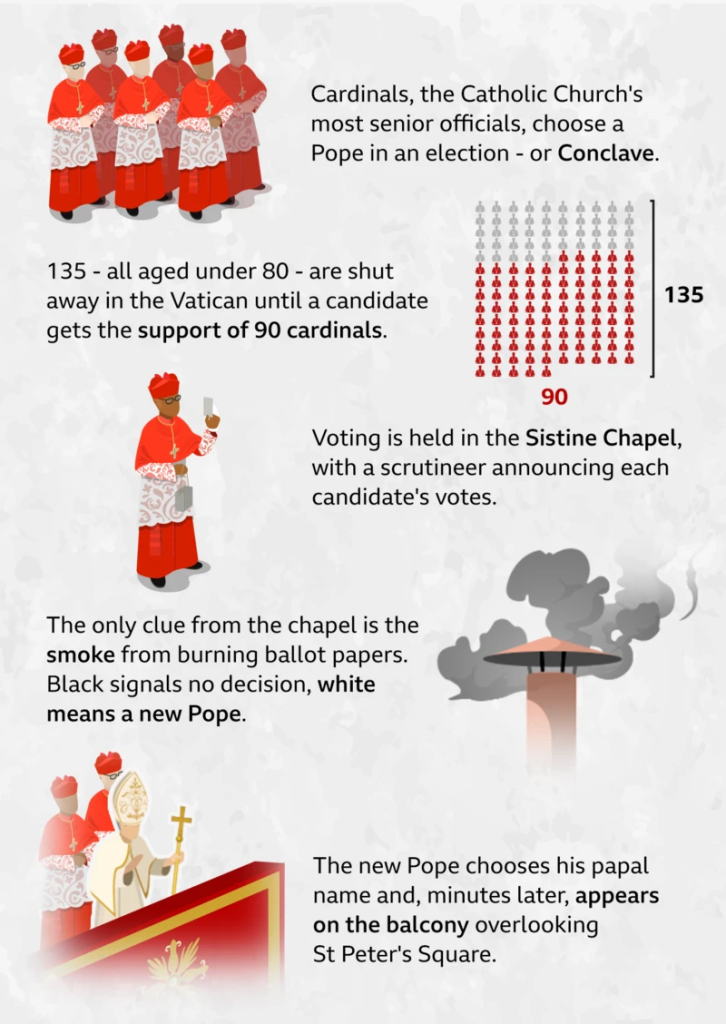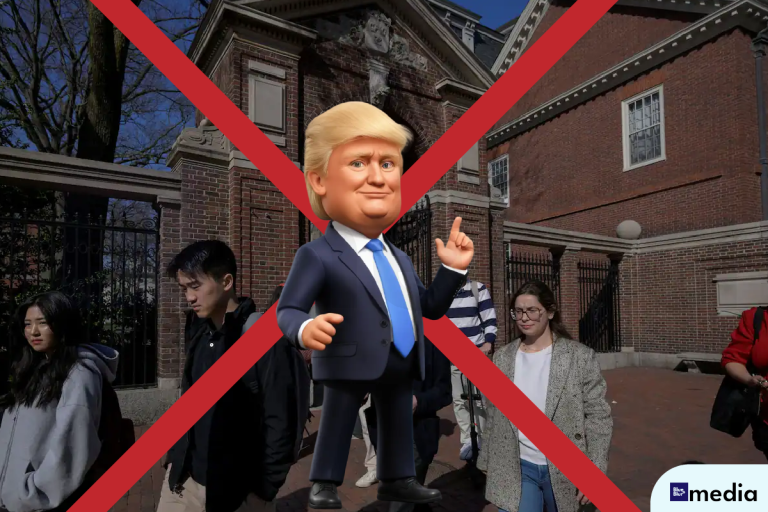Pope Election Process: How the Catholic Church Chooses a New Leader
The Pope election process is a centuries-old tradition that guides the Catholic Church in selecting a new spiritual leader. Known as a Conclave, this sacred event follows strict steps to ensure a smooth transition of leadership. Below, we explain how the Cardinals elect a new Pope, from the gathering of voters to the final announcement.

Image Source:BBC
Cardinals Gather for the Conclave
When the papal seat becomes vacant, Cardinals under 80 years old travel to Vatican City. These 135 eligible Cardinals isolate themselves until they elect a new Pope, ensuring no outside influence affects their decision.
The Voting Process Begins
Inside the Sistine Chapel, each Cardinal writes their chosen candidate’s name on a ballot. Scrutineers then count the votes and announce the results, maintaining full transparency. If no candidate receives a two-thirds majority, the Cardinals vote again.
Smoke Signals Reveal the Outcome
After each voting round, the Vatican sends a signal through smoke. Black smoke means no decision, while white smoke announces a successful process. Crowds in St. Peter’s Square eagerly watch for this historic moment.
The New Pope Chooses His Name
Once elected, the Pope selects a new name, often honoring a saint or previous Pope. This choice reflects his vision for the Church and sets the tone for his leadership.
The Pope’s First Public Appearance
Finally, the new Pope steps onto the balcony of St. Peter’s Basilica. He greets the world for the first time as the Church’s leader, marking the end of the Pope election process and the start of his papacy.
Conclusion
The process is a deeply spiritual and structured event. From the secret ballots to the white smoke, each step ensures a fair and sacred transition of power, uniting millions of Catholics worldwide.






